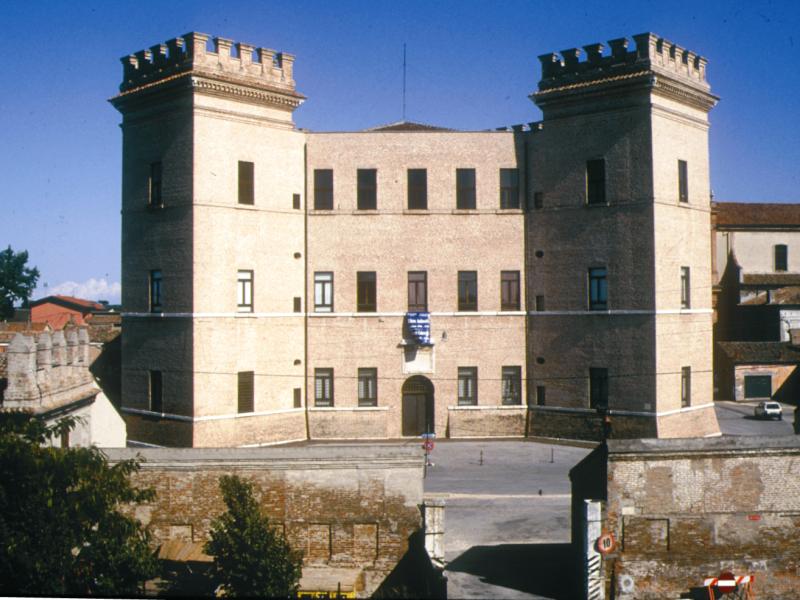Create your holiday
Mesola
History and factsMesola is located in the Po Delta, south of the branch calledPo di Goro which is the division between Veneto and Emilia-Romagna.
Up to the tenth century the current town of Mesola was part of the sea, and only after the progressive advance of the coastline a spit of land had formed, which had different owners.
At the end of the fifteenth century the House of Este bought this land, turned it into a hunting reserve and built a Delizia (a court residence) out of town, a great center which opposed, commercially and militarily, the power of Venice.
This ambitious project of economic planning was interrupted by the end of the Signoria of the House of Este in Ferrara; after, the territories went under the House of Austria control, then under the Papal States and finally France.
At the beginning of the twentieth century reclamations (in Italian: Bonifiche) were realized: great works of rehabilitation of the land covered by the waters.
Mesola is a good starting point to visit Mesola castle, one of the Delizie of the House of Este; for the cycling route Po Delta, an extraordinary journey that follows the Great Po River in the last kilometers before reaching the sea; for a naturalistic visit to the Great Mesola Wood, a Natural Reserve which is one of the last and best preserved remaining lowland forest, the memory of the ancient forests that were there until a few centuries ago along the Adriatic Coast.
What to visit:
Mesola Castle
You can not miss a visit to one of the Delizie of the House of Este, which is located in Mesola.
Mesola Castle is one of the 19 prestigious residences (called Delizie) of the House of Este. It is located in Mesola in square Umberto I. It was built between 1578 and 1583 on orders of King Alfonso II d'Este and was used as a residence by the Este during hunting in Mesola Wood. Four massive towers, crenellated walls and large windows make the Castle a structure somewhere between a fortress and a luxury home, protected by nine miles of walls.
The first room shows the relationship of this Delizia Estense with the surrounding area, such as the Sacca and the Port of Goro, the long tree-lined avenue, the walls in the enclosure.
The second room develops the theme of the flora and fauna during the cycle of the four seasons in the Great Wood of Mesola, where the Holm oak is the protagonist, a type of oak proper to the Mediterranean.
The tour offers the atmosphere that can be felt in the Park of the Duchesse, a circular clearing of about two hectares where there are not trees, but a large lawn of moss and lichen. A legend says that this lawn was attended by the Este in their leisure time at the estate.
On the second floor the castle hosts the "Museum of the Deer and the Mesola Wood", with panels, studies and reconstructions of evolution and habitat of deer Mesola, the only native species in Peninsular Italy and only present in the State-owned reserve "Mesola Wood" in about 150 units. The exhibition sums up its way, documenting the traces in the history and culture of Ferrara, in Christian worship, in art and in the Renaissance tradition of the Este court in Ferrara.
The "Museum of the Deer and the Mesola Wood" has obtained the status of Quality Museum, recognized by the Institute for Cultural Heritage of Emilia-Romagna.
There are many activities: free guided tours by bicycle in Mesola Wood; guided tours of the "Museum of the Deer and the Mesola Wood" and at Mesola Castle; tastings of local food and wine in square Santo Spirito; boat excursion on the Po di Goro; show market with truffles, mushrooms, bio- and traditional foods, and the market of decorative handicrafts. Food stand within Mesola Castle with local specialties (truffles and mushrooms).
Fun fact: thanks to the special sandy soil of this area on the edge of the Great Wood of Mesola, a type of sweet radicchio is produced; its intense flavor goes well with both the preparation of traditional recipes and the testing of new special food-and-wine combinations.


